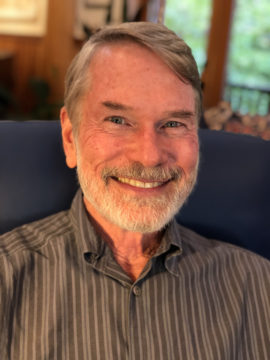What is Giving Compass?
We connect donors to learning resources and ways to support community-led solutions. Learn more about us.
Search our Guide to Good
Start searching for your way to change the world.
In 2018, the national venture philanthropy organization New Profit brought together pairs of donors and social entrepreneurs from their community for candid conversations on the future of social problem-solving. These “unlikely duos” were given thought-provoking questions to respond to and discuss on the spot, and we were able to see where a conversation can go when it’s centered on getting to know another person and his or her perspective, rather than the technical aspects of change-making. Relationships are fundamental to problem-solving, and these duos show us the power of two people from different backgrounds sharing insights and ideas on forward-leaning solutions.
In Episode Two, philanthropist Steve Arnold (Polaris Partners) and social entrepreneur Phyllis Lockett (LEAP Innovations) discuss how we bring a focus to evidence and outcomes in social entrepreneurship.
Giving Compass continued the conversation about evidence-based practices with Arnold, who shared valuable insights for other philanthropists interested in supporting education.
How often do you stop to consider whether the innovation and approaches being used in education are actually working for the children they’re supposed to help?
It’s a question venture capitalist, tech veteran and philanthropist Steve Arnold asks himself and challenges other donors to consider, especially since edtech has become what he calls an “irrational market.”
 “The buyers of a product are not necessarily ... the consumers or the people who need it to be a certain way,” he said, adding that there is a lot of investment in programs or tools that may not solve a problem people have.
“The buyers of a product are not necessarily ... the consumers or the people who need it to be a certain way,” he said, adding that there is a lot of investment in programs or tools that may not solve a problem people have.
Thirty years ago, Arnold co-founded the George Lucas Educational Foundation. It publishes Edutopia, an initiative that identifies successful education programs and showcases them for free. He is also an advisor to New Profit grantee LEAP Innovations, which pilots and scales personalized learning technologies.
Arnold was connected to LEAP through New Profit, which uses an approach Arnold implements in his own giving: Choosing sectors with hard problems and funding innovative programs that make a significant difference.
“We see a culture of innovation developing among educators, among districts and among superintendents when there is an evidence-based approach and an accessible strategy,” Arnold said.
A Hunger for Evidence-based Programs
Arnold points to LEAP Innovations as an example of an organization that can draw the line directly to benefitting kids. The organization is embedded in Chicago public schools and working with educators in real-world situations to determine how to build a personalized learning framework that changes outcomes for students. Successes have included a 13 percent increase in literacy for students who used a reading product versus students in a control group.
Arnold is also a proponent for The Collaborative for Academic, Social and Emotional Learning (CASEL) Collaborative Districts Initiative, which provides support and guidance to urban school districts incorporating social and emotional learning into curriculums. CASEL operates at scale, relies on an evidence-based approach and has demonstrated positive impacts on students.
“That’s the final test for whether education innovation is actually worth doing,” Arnold said. “Can you trace impact all the way down to making kids lives better either socially or emotionally or academically or all of the above?”
Advice to Donors Who Want to Make an Impact on Education
- Seek out true education innovation: Arnold says to look for organizations where evidence is required, but understand that it doesn’t have to be set in stone. “There are many innovations where there is encouraging data from thoughtful social entrepreneurs who are trying to find new models and a lot of time those are the hardest to fund.”
- Support social entrepreneurs and help them grow: Support innovations with early data and teams that have capacity to scale. “That allows you to get from demonstration projects to systems change projects without losing the very innovation that appears to be effective at small scale.”
- Be flexible: Don’t assume innovation is predictable. Find organizations that are willing to adapt to data they receive, problem-solve and be willing to set aside assumptions that aren’t supported by evidence.
Categories:
- North America
- Education (Other)